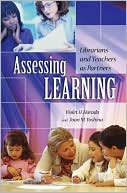Category Books
- Fiction Books & Literature
- Graphic Novels
- Horror
- Mystery & Crime
- Poetry
- Romance Books
- Science Fiction & Fantasy
- Thrillers
- Westerns
- Ages 0-2
- Ages 3-5
- Ages 6-8
- Ages 9-12
- Teens
- Children's Books
- African Americans
- Antiques & Collectibles
- Art, Architecture & Photography
- Bibles & Bible Studies
- Biography
- Business Books
- Christianity
- Computer Books & Technology Books
- Cookbooks, Food & Wine
- Crafts & Hobbies Books
- Education & Teaching
- Engineering
- Entertainment
- Foreign Languages
- Game Books
- Gay & Lesbian
- Health Books, Diet & Fitness Books
- History
- Home & Garden
- Humor Books
- Judaism & Judaica
- Law
- Medical Books
- New Age & Spirituality
- Nonfiction
- Parenting & Family
- Pets
- Philosophy
- Political Books & Current Events Books
- Psychology & Psychotherapy
- Reference
- Religion Books
- Science & Nature
- Self Improvement
- Sex & Relationships
- Social Sciences
- Sports & Adventure
- Study Guides & Test Prep
- Travel
- True Crime
- Weddings
- Women's Studies
Assessing Learning: Librarians and Teachers as Partners » (1st Edition)

Authors: Violet H. Harada, Joan M. Yoshina
ISBN-13: 9781591582007, ISBN-10: 1591582008
Format: Paperback
Publisher: Libraries Unlimited
Date Published: June 2005
Edition: 1st Edition
Author Biography: Violet H. Harada
VIOLET H. HARADA is Professor of Library and Information Science at the University of Hawaii where she also coordinates the specialization for school library media preparation. In her 35-year career she has been a secondary English teacher, an elementary school library media specialist, a state level administrator, and a curriculum designer. In her current research and publications, she focuses on inquiry-based approaches to information seeking and use and on the dynamics of collaborative instruction. With Joan M. Yoshina, she is the co-author of Learning Through Inquiry: Librarian-Teacher Partnerships.
JOAN M. YOSHINA recently retired from the Hawaii Department of Education after 34 years as an elementary and high school teacher, a language arts specialist, and a library media specialist. She worked in both elementary and middle school libraries in Oahu. Joan has also published articles on the information search process and integrated instruction, guest lectured at the University of Hawaii, and presented her work at both state and national conferences.
Book Synopsis
When school library media specialists and teachers work as partners, students benefit. Harada (library and information science) and Yoshino (Hawaii Department of Education, retired) give practical advice on assessment as a function of the library media center, tools such as checklists, rubrics, rating scales, conferences, logs, graphic organizers and personal contact, beginning assessment with the end in mind, using student portfolios, including electronic versions, and communicating evidence of learning. They provide additional readings for topics in each chapter, sample profiles, and models for lessons and learning experiences. Annotation ©2005 Book News, Inc., Portland, OR
School Library Journal
Clearly defying the conventional myth that teaching librarians do not (and need not) assess the results of their instruction, these two experienced Hawaii librarians offer terrific ideas at all grade levels for assessing (formatively) and evaluating (summatively) both our work and that of our students. After reviewing the topic of assessment, the authors look at library media centers to determine where and how students should be assessed and then examine assessment tools and explain a wide array of effective graphic organizers. In a flashback to excellent outcome-based learning strategies (renamed backward planning), they detail units for elementary, middle, and high schools using varied assessments, most extensively student portfolios. Finally, they discuss ways of collecting, analyzing, synthesizing, and communicating the learning to various stakeholders. Close to 100 illustrations demonstrate the many forms of assessment described. Chapters are well constructed and the writing is clear, though sticklers for style may tire of the ubiquitous organizational convention of asking/answering questions. While newer teacher-librarians may learn some of these strategies in library school, veterans should be excited at possibilities that they may never have considered, thus providing much-needed injections of clear, accessible, exciting instruction into their lives as well as those of their students.-Mary R. Hofmann, Rivera Middle School, Merced, CA Copyright 2005 Reed Business Information.
Table of Contents
| Ch. 1 | Assessment in today's school | 1 |
| Ch. 2 | Assessment in the library media center | 10 |
| Ch. 3 | Tools for assessment : checklists, rubrics, and rating scales | 19 |
| Ch. 4 | Tools for assessments : conferences, logs, and personal correspondence | 31 |
| Ch. 5 | Tools for assessment : graphic organizers | 49 |
| Ch. 6 | Beginning with the end in mind : elementary grade example | 68 |
| Ch. 7 | Beginning with the end in mind : middle school example | 81 |
| Ch. 8 | Beginning with the end in mind : high school example | 92 |
| Ch. 9 | Student portfolios | 106 |
| Ch. 10 | Communicating evidence of learning | 125 |
Subjects
 School Libraries
School Libraries  Instructional materials centers
Instructional materials centersEducation & Teaching
 School Libraries
School Libraries  School libraries -> United States
School libraries -> United StatesEducation & Teaching
 Teaching & Teacher Training
Teaching & Teacher Training  Teaching Aids & Devices
Teaching Aids & DevicesNonfiction
 All Nonfiction
All Nonfiction  Education - General & Miscellaneous
Education - General & MiscellaneousReference
 Library & Information Science
Library & Information Science  Libraries
LibrariesReference
 Library & Information Science
Library & Information Science  Library Administration and Services
Library Administration and ServicesNonfiction
 Reference
Reference  Library & Information Science
Library & Information Science
